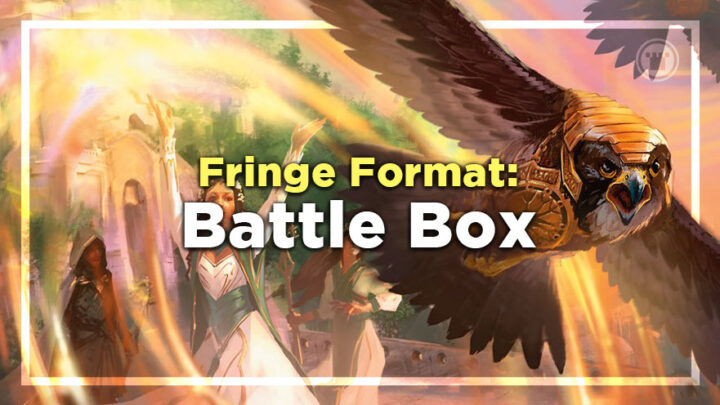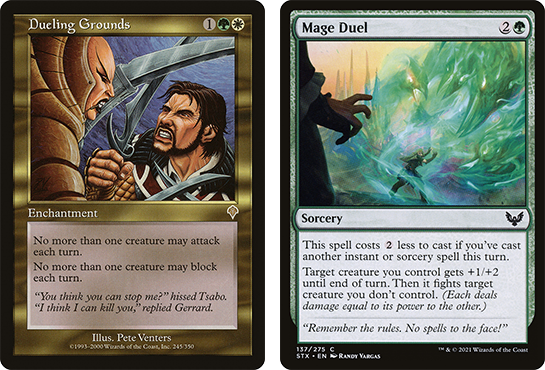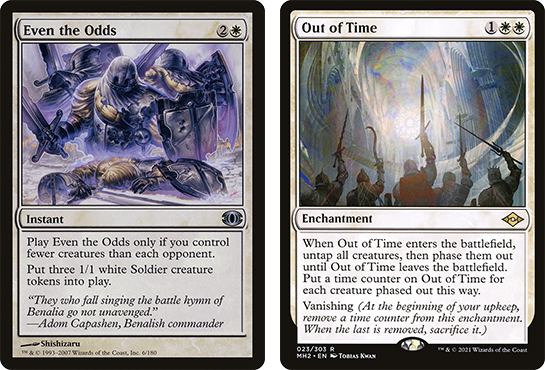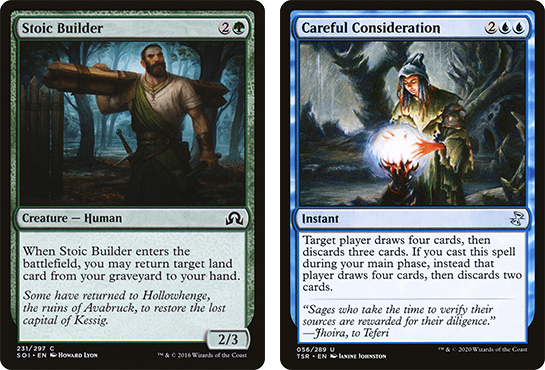It’s time for another Fringe Format! This time Chris takes a look at a format that could be called two-player Cube: Battle Box!
Battle Box is probably not a format that a ton of folks out there know about. But if you like playing Limited Magic, and specifically Cube, it’s one you should get to know. Mostly because Battle Box solves one of the biggest problems that Cube can run into: sometimes it can just be kind of hard to get six-to-eight people together all at once. Two people is usually a lot easier.
Now, there are other ways to play two-player Limited; there’s Winston Draft, Winchester Draft…basically just a lot of variations on that same sort of idea. Those formats can get a little odd with a Cube, just due to the way a Cube functions. You’re likely to both end up with insanely powerful decks, which can certainly be fun, don’t get me wrong. But again, if you want something a little more off the beaten path, something that leans a bit more into the variance inherent in Magic, that’s where Battle Box comes in.
Beginnings
Tracking the origin of Battle Box is a little tricky – it definitely has a precursor in another oddball format called Danger Room, invented by Brian Demars and formalized in an article on Quiet Speculation written by Douglas Linn in 2012. Dave WIlliams is the earliest writer to talk specifically about Battle Box, and that’s as good a place as any to land.
Battle Box was invented to try to make sure that every game played is a good game – meaning no one loses to not drawing enough mana, not having the right mana, or to the other player having some huge threat or combo that the other deck is completely unable to answer.
It’s also designed to get those good games in quickly. Commander is the juggernaut it is for a reason, but almost no one will claim that it’s a fast format (outside of maybe some cEDH decks). Cube games don’t necessarily last an overly long time, but the whole process of drafting, deckbuilding, and getting to even the first game can take a good chunk of time. A single game of Battle Box takes 20 or so minutes at most on average, and the nature of it means that it can hold immense replay value.
But what is that nature? How does one go about playing Battle Box?
How to Play Battle Box
Battle Boxes are, much like a Cube, a curated set of cards that form their own Limited environment. Also, like Cube, the size of a Battle Box can vary, but we’ll get into that a bit more later. No matter what the size and content of the Box however, one thing is always the same: the lands.
As this is meant to be a two-player format, you will need a grand total of twenty lands. Each player gets one of each basic land, and then five Guildgates. They don’t have to be specifically Guildgates, they can be any non-basic land that enters the battlefield tapped and that they tap for two colors of mana. The important part is that the colors are evenly distributed, so between the five lands you need two that can tap for any given color. In practical terms, you need each to be a set of ally-colored lands or enemy-colored lands.
Each player starts the game with their set of lands in a pile off to the side. On their turn, they may play any land from that pile. Despite what I said earlier about variance, this actually takes out a big part of the variance in the game, as you will never be short on mana or draw a land that you don’t need. The tricky bit is sequencing the order in which you play out your mana so that you can cast your spells the most efficiently you possibly can.
Each player grabs equal chunks of cards, shuffles them, and that’s their deck for the game. You can also play where you each play off a shared deck, although that changes the utility of cards like Ponder and Preordain. You can also play with a shared or separate graveyards, depending on how you want reanimator spells and flashback-like abilities to play out.
Since players start with access to all of their land cards, starting hand sizes are usually lower than normal. Some variants start with four cards, some with six, but just be aware that the more cards you start with, you might be speeding up that game a bit.
After that, things play out like a normal game of Magic. You each have 20 life, can play one land a turn, and so on. But there’s still one big piece we’re missing here: what actually goes into a Battle Box?
Building a Battle Box
The contents of a Battle Box are…whatever you want them to be. This is where the Cube-like part of the format kicks in, as all a Battle Box needs to be is at least 200 or so cards, although you can get up to, well, as many cards as you want, really. If you aim for the lower end of that scale, you get less play out of the box before you start to “solve” it, and the more cards you add, the more you can play and never have the same thing happen twice.
The actual cards you choose to go into the box depend entirely on the experience you’re looking for. You can go full-on Power Cube and load up on the most powerful cards possible, so every game becomes throwing haymakers at each other. You don’t even have to build a box as a singleton-cube style of thing, although I do highly recommend that you do so. I would also suggest going the other way than Power-Cube levels of cards. Some of the most fun games of Magic I’ve ever played came from a relatively low-powered Battle Box.
Keeping the power level down and the average card quality fairly flat means that choices and strategy move to the forefront. You’re playing a completely random five-color deck, so the sequence in which you play your lands becomes incredibly important, and every small edge and advantage counts.
Keeping the power level down also helps with another possible issue – budget! It’s very easy to make a fully kitted out Battle Box for $50 in cards. In fact, it’s not hard to have the sleeves and deck box for the cards cost more than the actual cards themselves.
Here’s the advice that Jeremy Edwards has about building a Battle Box. Jeremy introduced me to the idea of Battle Boxes years ago and was foundational in the writing and research of this article. I can personally attest that the Box he’s built is quite fun to play and built with much thought and care. Now, straight from Jeremy:
- The best games last somewhere between 10 to 17 turns, or a few less than that if you’re playing two lands per turn. Players should usually be able to play out all their lands before the game concludes. If you want to play a very long game, then prioritize removal, life gain, and other defensive cards.
- Games should rarely feel completely one-sided. Whatever threats you include should have ample answers. Play your box frequently, preferably with a diverse group of people, and find out what they like and what they dislike. A problematic card (either too powerful or not powerful enough) usually reveals itself very quickly.
- Players should have choices at all stages of the game. One of the ways to increase agency is to include a lot of card selection, so I prioritize cycling, looting, and rummaging effects. I also like domain spells, which give you incentives to play basic lands instead of tapped dual lands, and landwalk creatures, which allow the opponent to capitalize on you playing basic lands early.
- Because I’m playing my box in an environment where speed matters, I avoid cards with a lot of text. I want the mechanics to be simple and straightforward even for people who are seeing these cards for the first time. I also avoid cards that search libraries and look at players’ hands, since those take longer to resolve.
Battle Box is a fantastic format, and easy to get into – it only requires one person to have a Box, after all. You can spend hours playing Battle Box games, and it’s also quick enough to kill time between rounds at a tournament. It’s portability, flexibility, and customizability make it a personal favorite of mine, and I hope I’ve inspired a few folks out there to try and build a Box of their own. If you’re looking for some more resources, maybe give mtgbattlebox.com a visit – they have a lot of completed boxes and ideas there to use as examples.

Chris is the Associate Media Producer at Card Kingdom. He would like to apologize to his son for not holding onto more cards from when he first started playing, as that likely would have paid for college. He enjoys pretty much all formats of Magic, but usually ends up playing decks that make other people dislike playing those formats with him.






